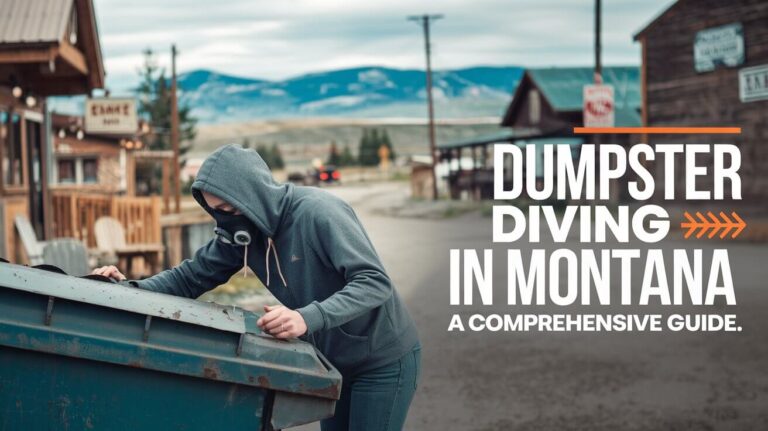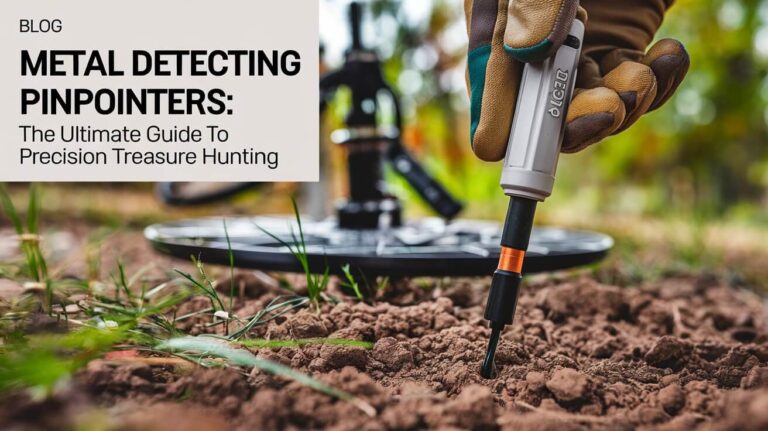
Planning a home renovation, decluttering project, or construction work? You’ll need a dumpster to dispose of waste and debris. Getting a dumpster requires careful consideration to ensure a smooth experience. In this detailed guide, we’ll cover everything you need to know about how to get a dumpster, from determining the right size to obtaining permits and understanding rental costs.
Determine Your Dumpster Size Needs
One of the first and most crucial steps in getting a dumpster is choosing the appropriate size. Dumpsters come in various sizes, typically measured in cubic yards, and selecting the wrong size can lead to issues like overfilling or unnecessary expenses.
The most common dumpster sizes include:
- 10-yard dumpsters: Ideal for small-scale projects like garage or basement cleanouts, minor renovations, or decluttering a single room.
- 15-yard dumpsters: Suitable for larger cleanouts, small-to-medium demolition projects, or moderate amounts of construction debris.
- 20-yard dumpsters: A versatile size that works well for home additions, garage demolitions, or whole-house cleanouts.
- 30-yard dumpsters: Recommended for major home renovations, new construction, or large-scale demolition projects.
- 40-yard dumpsters: The largest common size, typically used for commercial projects, significant demolitions, or extensive cleanouts.
To determine the appropriate dumpster size, consider the type and volume of waste you’ll be disposing of. It’s generally better to overestimate slightly rather than underestimate and risk overfilling the dumpster, which can result in additional fees.
If you’re unsure about the ideal size, don’t hesitate to consult with the dumpster rental company. They can provide guidance based on the specifics of your project and help ensure you have enough capacity without paying for more than you need.
Choose the Right Dumpster Rental Company
With numerous dumpster rental companies operating in most areas, it’s essential to do your research and choose a reputable provider. Here are some factors to consider when selecting a dumpster rental company:
- Local presence and availability: Look for companies that operate in your area and have dumpsters readily available for delivery when you need them.
- Pricing and transparency: Compare quotes from multiple companies and ensure they provide upfront, all-inclusive pricing without hidden fees.
- Customer reviews and reputation: Read online reviews and check the company’s ratings to gauge their level of customer satisfaction and service quality.
- Services offered: Consider whether the company offers additional services like recycling options, hazardous waste disposal, or driveway protection measures.
- Permit assistance: Some companies may help with obtaining the necessary permits for dumpster placement, which can simplify the process.
Don’t hesitate to ask questions and clarify any concerns you may have before committing to a specific dumpster rental company.
Obtain Necessary Permits
Depending on your location, you may need to obtain a permit before placing a dumpster on your property or in a public area. Permit requirements vary by city or county, so it’s essential to check with your local authorities.
Here are some typical steps to obtain a dumpster permit:
- Contact your local government office: Reach out to the appropriate department, such as the public works or zoning office, to inquire about permit requirements and the application process.
- Provide required information: Be prepared to provide details like the dumpster rental company’s name and contact information, the property address where the dumpster will be placed, and the rental period dates.
- Submit the application: Complete the permit application form, either online or in person, and submit it along with any required fees.
- Display the permit: Once approved, display the permit in a visible location near the dumpster placement area.
Some dumpster rental companies may offer assistance with obtaining the necessary permits, which can be a convenient option if you’re unsure about the process or requirements in your area.
Prepare for Dumpster Delivery
Once you’ve chosen the right dumpster size and secured any necessary permits, it’s time to prepare for the delivery. Here are some essential steps to ensure a smooth delivery process:
- Select a suitable delivery spot: Choose a level, paved surface that can accommodate the dumpster’s size and weight. Your driveway is often the most convenient option for residential projects.
- Clear the area: Remove any obstacles, vehicles, or objects from the delivery spot to provide ample space for the dumpster and the delivery truck’s maneuvers.
- Protect surfaces (if needed): If you’re concerned about potential damage to your driveway or ground surface, consider placing plywood or other protective materials beneath the dumpster’s placement area.
- Provide access: Ensure there’s a clear path for the delivery truck to access the designated spot without obstructions like low-hanging branches or overhead wires.
Taking these steps helps ensure a smooth delivery and avoids issues or delays.
Loading the Dumpster Properly
Once the dumpster is delivered, load it correctly to maximize space and avoid issues. Here are some tips for proper loading:
- Understand prohibited items: Most dumpster rental companies have restrictions on certain types of waste, such as hazardous materials, electronics, or appliances containing refrigerants. Be sure to clarify what can and cannot be placed in the dumpster.
- Distribute weight evenly: Avoid piling all the heavy debris in one corner, as this can cause an uneven weight distribution and potential stability issues. Instead, distribute the weight evenly throughout the dumpster.
- Maximize space: Break down larger items like furniture or appliances to create more room in the dumpster. Additionally, try to pack smaller items tightly to minimize wasted space.
- Consider weight limits: Most dumpster rentals have weight limits, and exceeding these limits can result in additional fees. Be mindful of the weight of your debris, especially if you’re disposing of dense materials like concrete or bricks.
By following these guidelines, you’ll ensure that your dumpster is loaded safely and efficiently, maximizing its capacity and minimizing the risk of additional fees or issues.
Dumpster Rental Costs and Fees
Dumpster rental costs can vary significantly depending on various factors, including the dumpster size, rental duration, location, and the rental company’s pricing structure. Here’s an overview of typical costs and potential additional fees:
- Rental cost: The base rental cost is typically determined by the dumpster size and rental duration. Smaller dumpsters (10-15 yards) may cost between $200 and $500, while larger sizes (30-40 yards) can range from $400 to $1,000 or more.
- Delivery and pickup fees: Many companies charge separate fees for delivering and picking up the dumpster, usually ranging from $50 to $150 each way.
- Disposal fees: The cost of disposing of the waste at a landfill or transfer station is often included in the rental price, but some companies may charge additional disposal fees based on the weight or volume of the debris.
- Overage fees: If you exceed the dumpster’s weight limit or fill it beyond its capacity, you may be charged overage fees, which can be substantial.
- Permit fees: If permits are required in your area, you’ll need to factor in the cost of obtaining them, typically ranging from $10 to $100 or more.
- Damage fees: If the dumpster or the surface it’s placed on is damaged during the rental period, you may be responsible for repair or replacement costs.
Discuss all fees with the dumpster rental company upfront and clarify what’s included in their pricing. Choose the right-sized dumpster and stay within weight limits to avoid extra costs.
Schedule Dumpster Pickup
Once you’ve finished loading the dumpster, it’s time to schedule the pickup. Most rental companies provide a specific rental period, typically ranging from 7 to 14 days, during which the dumpster must be available for pickup.
Here are some tips for scheduling the pickup:
- Contact the rental company: Notify the dumpster rental company that you’re ready for pickup, either by phone, email, or through their online portal.
- Provide your address and availability: Provide your exact address and specify any dates or time frames when you’ll be available for the pickup.
- Clear the area: Remove any obstacles or obstructions around the dumpster to ensure the pickup truck can access it easily.
- Secure loose items: Make sure any loose items or debris are properly contained within the dumpster to prevent them from blowing away or falling out during pickup.
- Be present (if possible): While not always necessary, being present during the pickup can be helpful in case the driver has any questions or concerns.
- Confirm successful pickup: After the dumpster has been removed, double-check the area to ensure no debris or damage was left behind.
By following these simple steps, you can ensure a smooth and hassle-free dumpster pickup process, completing your project or cleanout without any lingering issues.
Conclusion
Getting a dumpster may seem like a straightforward task, but there are several important factors to consider to ensure a successful and stress-free experience. From determining the right size to navigating permits, preparing for delivery, and understanding rental costs, this comprehensive guide has covered all the essential steps.
Remember, proper planning and communication with the dumpster rental company are key to avoiding potential issues or additional fees. By following the tips and guidelines outlined in this article, you can streamline the process of getting a dumpster and focus on completing your project efficiently.
Whether you’re tackling a home renovation, construction site cleanup, or a major decluttering project, having the right dumpster on hand can make all the difference. With the knowledge gained from this guide, you’re now equipped to confidently navigate the dumpster rental process and get the job done right.






